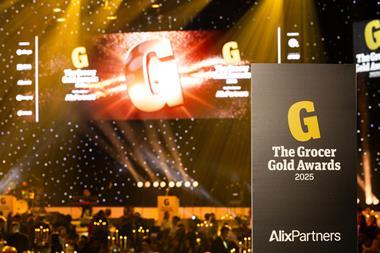Having gone the distance with Covid, UK grocery is already facing another punishing prize fight. This time, it’s a familiar rematch: brands versus own label. For brands, their advantages are agility and reach – as shown by many during the height of the pandemic. And by some again this year.
Take Monster, which has added a knockout £101.3m – the biggest absolute gain in this report – by keeping up a steady flow of innovation and larger formats. Similarly, NPD has been key to Charlie Bigham’s growing value by 31.1% – faster than last year. And Wrigley’s and Highland Spring have capitalised on the return of impulse to be back in the black after a disastrous 2020.
Read more:
-
The great grocery punch-up: Britain’s Biggest Brands 2022
-
Britain’s Biggest Brands 2022: The top 100
-
Powerhouses of caffeinated soft drinks rake in extra £255.6m
-
Britain’s Biggest Brands 2022: the contenders
-
Britain’s Biggest Brands 2022: who’s up and who’s down?
But they aren’t typical of this year’s top 100, which overall have grown value by just 0.6%. Only 46 have achieved growth, and just 20 by double digits. Basically, the biggest brands are looking bruised. And they have myriad other opponents to contend with – not least rampant inflation, supply issues caused by Brexit and the war in Ukraine, and an HFSS clampdown.
Meanwhile, in the opposite corner of our figurative boxing ring, is own label. While it faces the same difficulties, it’s nevertheless looking pumped. NielsenIQ data shows its total volume share of fmcg is returning to full strength, having grown from 60.5% to 61.3% over the past year. Value share is up, too – from 52.1% to 52.4%.
That pace of growth will almost certainly pick up dramatically as cash-strapped Brits look to rein in spending further; consumer confidence already dipped sharply at the start of 2022, according to YouGov. With shoppers squeezed by food inflation, higher NI payments and soaring fuel costs, own label could pack one heck of a wallop in 2022.
And yet, brands can counterpunch by following the examples of this year’s most successful innovators, while also leaning into the trustworthiness and quality that did them so well during lockdowns. After all, many of the brands with big losses this year – from Birds Eye to Young’s Seafood – are still way ahead in value compared with pre-pandemic. There’s little need (yet) to fight dirty by cutting quality and price to match own label – because they could end up punching themselves in the face.
This opinion piece is part of our Britain’s Biggest Brands special. Click here for the main feature, the top 100 brands, who’s up and who’s down and the contenders

The great grocery punch-up: Britain’s Biggest Brands 2022

Brands triumphed during the lockdown era. But as restrictions come to an end, inflation soars and the supply chain crisis worsens, own label looks ready to stage a comeback
- 1
- 2
 Currently
reading
Currently
reading
Brands vs own label: UK grocery is limbering up for a big prize fight
- 4
- 5
- 6



































No comments yet